- Home
- Susan Wittig Albert
The Tale of Briar Bank Page 28
The Tale of Briar Bank Read online
Page 28
Recipes from the Land Between the Lakes
Raised Pie
A “Raised Pie of Poultry or Game,” as served at the Wickstead funeral luncheon and described by Mrs. Beeton in her incomparable Beeton’s Book of Household Management, was a pie baked in an embossed spring-form pan 3 to 4 inches deep. The pan was lined with a stiff pastry, which was then piled high with layers of boned cooked chicken or pheasant seasoned with mace, allspice, pepper, and salt; forcemeat (finely chopped, highly spiced meat); veal; and ham. This was covered with a decorated pastry top in a domed shape, rather like a lid, with a hole in the top. When baked, a thick gravy made from the bones was poured through the hole, and the pie was allowed to cool. The gravy, Mrs. Beeton says, “should form a firm jelly, and not be in the least degree in a liquid state.”
Parsley’s Savory Potato Soup
Potatoes were grown in every Lakeland garden and appeared in a variety of forms on every Lakeland table. Here’s how Parsley makes the delicious potato soup she serves to a crowd of hungry animals at luncheon at The Brockery.
3 tablespoons butter
1 onion, diced
1 rib celery, diced
1 medium carrot, sliced thin
1 clove garlic, minced
2 tablespoons flour
3 cups chicken broth
3⁄4 cup diced ham
2 medium potatoes, peeled and diced (about 2 cups)
1⁄2 teaspoon dried thyme
1⁄2 teaspoon dried ground bay leaves
1 cup half-and-half
1⁄2 teaspoon salt, or to taste
1⁄4 teaspoon fresh ground black pepper
Heat butter in a large saucepan over medium-low heat. Add diced onion, celery, and carrot. Cook, stirring, until vegetables are tender. Add the garlic and cook for 1 minute longer. Stir in flour until well blended. Add chicken broth, ham, and potatoes. Continue cooking, stirring, until thickened. Add thyme and bay leaves. Cover and cook for about 10 minutes, or until potatoes are tender. Stir in half-and-half, add salt and pepper to taste, and reheat. Serves 4 Big Folk.
Mrs. Lester Barrow’s Bread Pudding
Mrs. Barrow bakes bread pudding with apples and raisins and serves it warm, with a dollop of whipped cream, to Mr. Heelis and other appreciative patrons at the Tower Bank Arms.
2 cups milk
3 eggs, beaten
1⁄3 cup sugar
1⁄2 teaspoon salt
1⁄2 teaspoon vanilla extract
4 slices white bread, without crust, cubed
1 apple, cored and diced
1⁄2 cup raisins
1 teaspoon cinnamon, mixed with dash of nutmeg
Heat milk until hot, but not boiling. In a bowl, beat together eggs, sugar, and salt. Gradually stir a half-cup of the hot milk into the egg mixture. Stir in remaining milk. Add vanilla. Pour over cubed bread. Stir in apple and raisins. Pour into a 2-quart greased baking dish. Sprinkle cinnamon /nutmeg mixture over top. Bake, uncovered, at 300° for about 50 minutes, or until a knife inserted near the center comes out clean. Serves 6.
Bosworth’s Nettle Beer
Nettle beer was brewed throughout the north of England. Wear thick gloves when you are gathering nettles, and avoid being stung by the plant. This traditional recipe comes from Maude Grieve’s A Modern Herbal (1931) and is probably very similar to the one Bosworth used:
The Nettle Beer made by cottagers is often given to their old folk as a remedy for gouty and rheumatic pains, but apart from this purpose it forms a pleasant drink. It may be made as follows: Take 2 gallons of cold water and a good pailful of washed young Nettle tops, add 3 or 4 large handsful of Dandelion, the same of Clivers (Goosegrass) and 2 ounces of bruised, whole ginger. Boil gently for 40 minutes, then strain and stir in 2 teacupsful of brown sugar. When lukewarm place on the top a slice of toasted bread, spread with 1 ounce of compressed yeast, stirred till liquid with a teaspoonful of sugar. Keep it fairly warm for 6 or 7 hours, then remove the scum and stir in a tablespoonful of cream of tartar. Bottle and tie the corks securely. The result is a specially wholesome sort of ginger beer. The juice of 2 lemons may be substituted for the Dandelion and Clivers. Other herbs are often added to Nettles in the making of Herb Beer, such as Burdock, Meadowsweet, Avens Horehound, the combination making a refreshing summer drink.
Mrs. Prickle-Pin’s Comfrey Salve
Old Mrs. Prickle-Pin (prickle-pin is a country name for a hedgehog) had a great many recipes for various sorts of salves. Comfrey and plantain are traditional healing herbs that were much used by people who had no local pharmacy. Many relied on Nicholas Culpeper’s Complete Herbal (published in 1653 and reissued in many editions) for information about medicinal plants.
2 cups olive oil
3 tablespoons fresh or 2 tablespoons dried comfrey
leaves
3 tablespoons fresh or 2 tablespoons dried plantain
leaves
1⁄2 cup beeswax
Put olive oil and herbs in the top of a double boiler. Simmer gently for 30 to 45 minutes, stirring frequently. (Do not allow to boil.) Strain to remove herbs; discard the herbs and set the oil aside. In the top of the double boiler, melt the beeswax, then add the strained oil and stir, blending thoroughly. Pour into jars or salve tins. When cool, label and date. (This will keep for about 12 months, longer if refrigerated.)
Sarah Barwick’s Queen Cakes
For these feather-light cupcakes, Sarah uses a recipe that was developed by Elizabeth Raffeld (1733-1781), a well-known eighteenth-century Manchester confectionary, and preserved in her book The Experienced English Housekeeper. I wonder if Sarah had the time to beat her egg whites for “near half an hour”! However, unlike Mrs. Raffeld, our Sarah would have possessed one of the metal rotary egg beaters that came on the market after 1870, when Turner Williams of Providence, Rhode Island, patented the now-familiar hand-cranked beater with two intermeshed, counterrotating whisks. It was an improvement on earlier rotary egg beaters that had only one whisk.
To make Queen Cakes
Take a pound of loaf sugar, beat and sift it, a pound of flour well dried, a pound of butter, eight eggs, half a pound of currants washed and picked, grate a nutmeg, the same quantity of mace and cinnamon. Work your butter to a cream, then put in your sugar, beat the whites of your eggs near half an hour, mix them with your sugar and butter. Then beat your yolks near half an hour and put them to your butter, beat them exceeding well together. Then put in your flour, spices, and the currants. When it is ready for the oven bake them in tins and dust a little sugar over them.
Glossary
Some of the words included in this glossary are dialect forms; others are sufficiently uncommon that a definition may be helpful. My main source for dialect is William Rollinson’s The Cumbrian Dictionary of Dialect, Tradition and Folklore. For other definitions, I have consulted the Oxford English Dictionary, second edition (London: Oxford University Press, 1989).
Awt. Something, anything.
Auld. Old.
Betimes. Sometimes.
Bodder, boddersome. Trouble.
Charabanc. A long wagon with rows of seats facing forward.
Couldna. Could not.
Doan’t. Does not.
Dust. Does.
Girt. Great.
Hasta. Have you?
How. Hill, as in “Holly How,” the hill where Bosworth Badger lives.
Joinery. Carpenter’s shop.
Knowsta. Do you know?
Mezzlement. Mystery, puzzlement.
Mezzling. Puzzling.
Nae. No, not.
Nawt. Nothing.
Off-comer. A stranger, someone who comes from far away.
Ownsel. Own self.
Pattens. Farm shoes with wooden soles and leather uppers.
Pickle. A person, usually a small child, who is always causing trouble.
Reet. Right.
Sae. So.
Sartain. Certain.
Sommat. Somewhat.
Tha, thi. You.
&
nbsp; Tha’rt. You are.
Toffy, a toff. A term used to describe someone (usually wealthy) who is stylishly dressed and behaves in a superior and condescending way toward others.
Trice. Very quickly, all at once, “in a trice.”
Verra. Very.
Wudsta. Would you?
1
Linda Lear tells the full story of this financial disaster and Beatrix’s role in rescuing the firm in Beatrix Potter: A Life in Nature, pp. 284-89.
2
“Peter Rabbit Piracies in America,” by Carol Halebian, in Beatrix Potter in America: Beatrix Potter US Studies I, edited by Libby Joy, Judy Taylor, and Ivy Trent. Published by the Beatrix Potter Society, 2007.
3
The television show, produced by Julian Fellowes and available on DVD, is called “A Most Mysterious Murder.” The Storrs case is featured in Series 1, Disk 2. An account of the murder may be read at www.gorse-hall.co.uk/murder.htm (accessed July 25, 2007).
4
“The Little Black Kettle,” in A History of the Writings of Beatrix Potter, by Leslie Linder, Frederick Warne and Company, London, 1971, pp. 330-31.

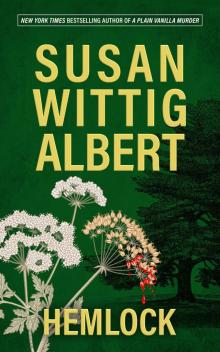 Hemlock
Hemlock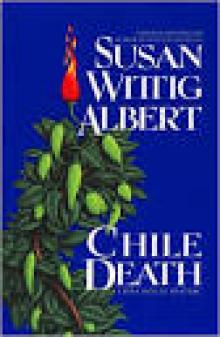 Chile Death
Chile Death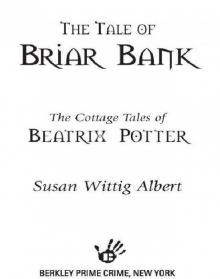 The Tale of Briar Bank
The Tale of Briar Bank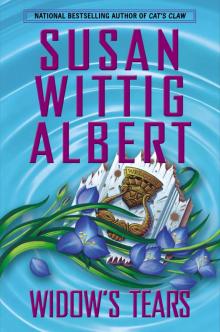 Widow's Tears
Widow's Tears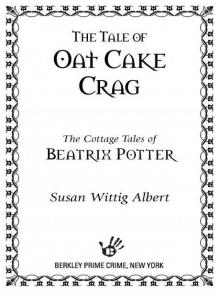 The Tale of Oat Cake Crag
The Tale of Oat Cake Crag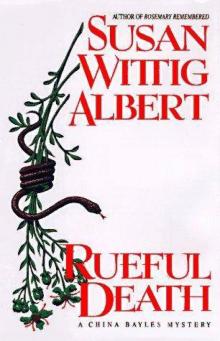 Rueful Death
Rueful Death Bittersweet
Bittersweet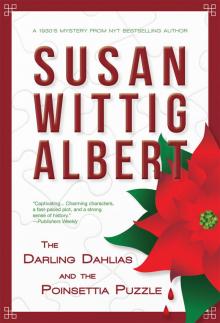 The Darling Dahlias and the Poinsettia Puzzle
The Darling Dahlias and the Poinsettia Puzzle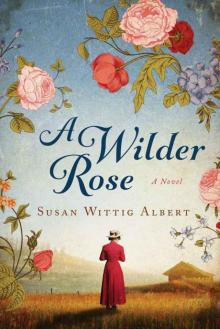 A Wilder Rose: A Novel
A Wilder Rose: A Novel Spanish Dagger
Spanish Dagger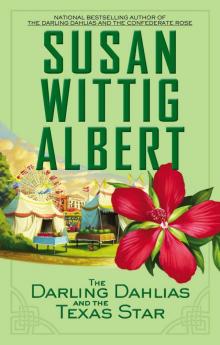 The Darling Dahlias and the Texas Star
The Darling Dahlias and the Texas Star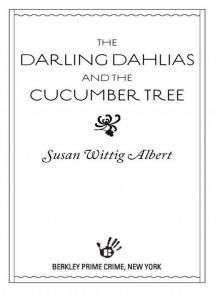 The Darling Dahlias and the Cucumber Tree
The Darling Dahlias and the Cucumber Tree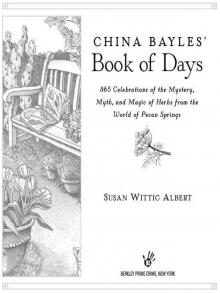 China Bayles' Book of Days
China Bayles' Book of Days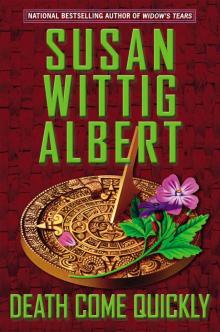 Death Come Quickly
Death Come Quickly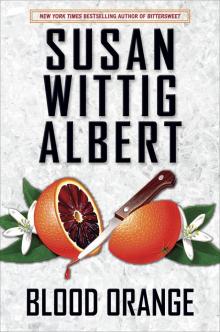 Blood Orange: A China Bayles Mystery
Blood Orange: A China Bayles Mystery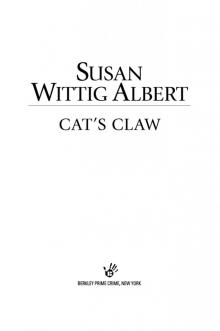 Cat's Claw
Cat's Claw The Darling Dahlias and the Naked Ladies
The Darling Dahlias and the Naked Ladies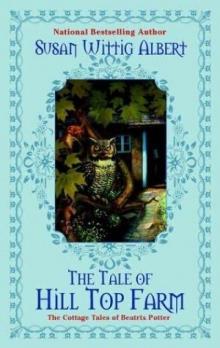 The Tale of Hill Top Farm
The Tale of Hill Top Farm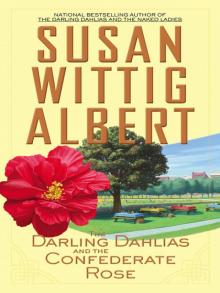 The Darling Dahlias and the Confederate Rose
The Darling Dahlias and the Confederate Rose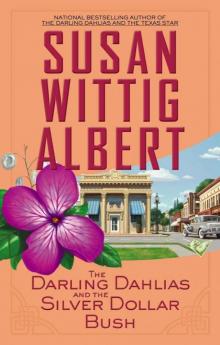 The Darling Dahlias and the Silver Dollar Bush
The Darling Dahlias and the Silver Dollar Bush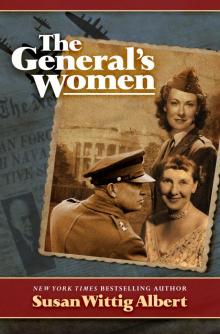 The General's Women
The General's Women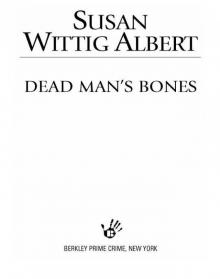 Dead Man's Bones
Dead Man's Bones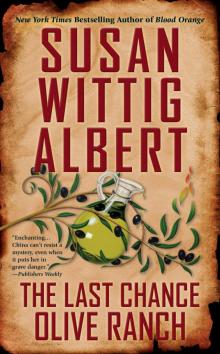 The Last Chance Olive Ranch
The Last Chance Olive Ranch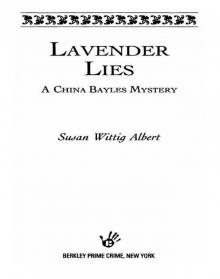 Lavender Lies
Lavender Lies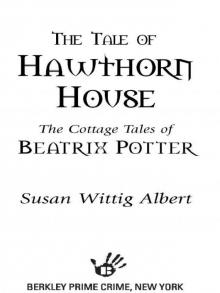 The Tale of Hawthorn House
The Tale of Hawthorn House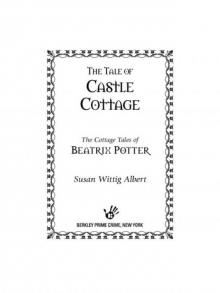 The Tale of Castle Cottage
The Tale of Castle Cottage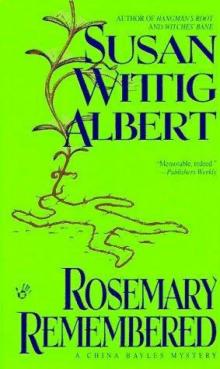 Rosemary Remembered - China Bayles 04
Rosemary Remembered - China Bayles 04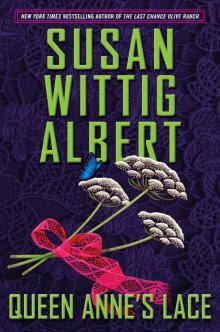 Queen Anne's Lace
Queen Anne's Lace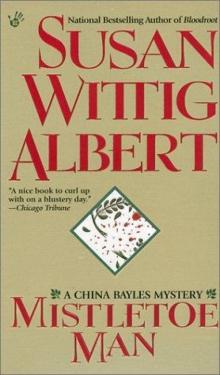 Mistletoe Man - China Bayles 09
Mistletoe Man - China Bayles 09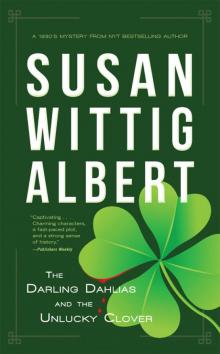 The Darling Dahlias and the Unlucky Clover
The Darling Dahlias and the Unlucky Clover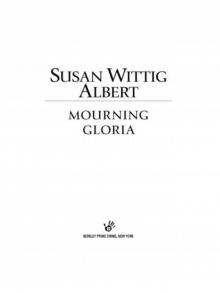 Mourning Gloria
Mourning Gloria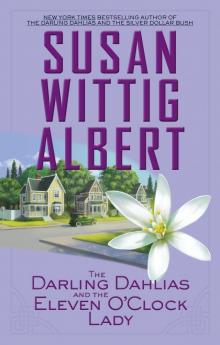 The Darling Dahlias and the Eleven O'Clock Lady
The Darling Dahlias and the Eleven O'Clock Lady